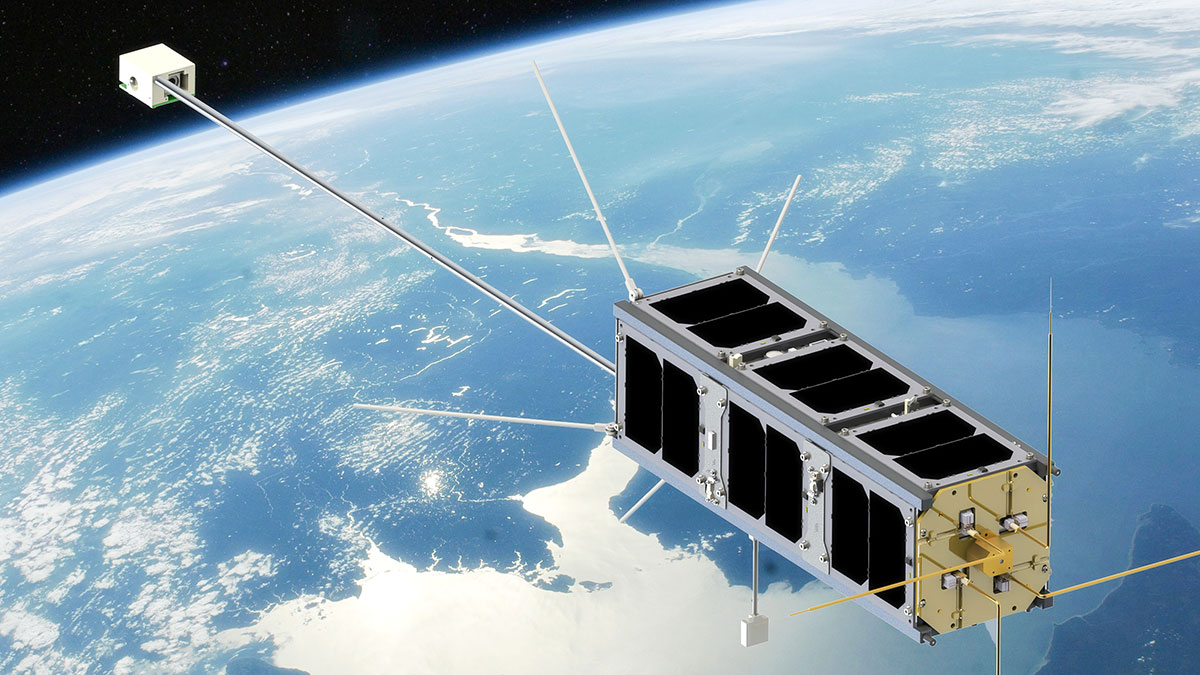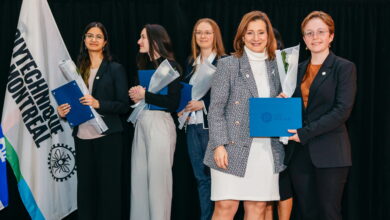First satellite made in Alberta by students set to blast off this summer
 Supplied — Andy Kale
Supplied — Andy KaleStudents in campus’ science and engineering labs are testing the University of Alberta’s first satellite to ensure its survival in space. In the summer, the foot-long satellite will leave Alberta for Earth’s orbit at an altitude of 400 km.
The Experimental Albertan #1 (ExAlta-1) is a project within AlbertaSat, the U of A’s CubeSat design group. Formed in 2010 as a competitor in the Canadian Satellite Design Challenge, the group started out as a “handful” of students. Membership has since grown to 50 students and are working on design, technology, funding, building, testing and finally executing ExAlta-1’s mission.
Made of three 10-cm cube units, ExAlta-1 is a small CubeSat, which measure space weather in the Earth’s thermosphere. The nanosatellite will record electron temperature and density of plasma, planetary magnetic fields and levels of radiation in Earth’s thermosphere. Measuring these are a Langmuir probe, a magnetometer and a radiation dosimeter, respectively.
As part of a larger mission, the QB50 mission, ExAlta-1 will enter space with 49 other CubeSats, made by teams around the world. Coordinated by the von Karmen Institute of Fluid Dynamics in Belgium, the mission will use CubeSats as a network for multi-point measurements. Individually, CubeSats can’t gather a large dataset, but multiple CubeSats with the same instrumentation can spread out to allow for broader data collection, Nokes said.
“Because of the advances of miniaturization, there’s a lot of things that you can pack into something the size of a loaf of bread,” he said.
Those working on ExAlta-1 will also have the opportunity of watching the launch in-person, which will likely be in the United States in July, Nokes said. An event for livestreaming the launch for students of the U of A is currently being planned as well.
After launch in the summer, ExAlta-1 and its companions on the QB50 mission will arrive at the International Space Station and await deployment. They’ll likely be released into space by the astronauts on the space station a few months later, Nokes said.
“The astronauts will put them on a table that goes outside the International Space Station and then they just get plopped out one-by-one,” he said. “Kind of like a PEZ dispenser.”
After functioning for about a year and a half, ExAlta-1 will re-enter Earth’s atmosphere and burn up, while gathering data in the process.
The U of A has been building its aerospace presence since 2004, when it approved the Institute for Space Science, Exploration and Technology (ISSET), Ian Mann, Professor in the Department of Physics and lead academic advisor of AlbertaSat, said.
ISSET bridges scientists and engineers to investigate space and develop technologies that can endure its harsh environment. It’s mainly a research institute, but it also supports student initiatives such as AlbertaSat and the ExAlta-1 project. Those experiential, interdisciplinary opportunities are important in developing students looking to enter the growing Canadian aerospace industry, Mann said.
“Before the AlbertaSat project, if you asked one of the students on campus if it was possible to be involved in building a spacecraft and sending it to space, most would have just kind of laughed at you,” Mann said. “They’d have said … it’s a NASA thing, in a northern city like Edmonton there’s no chance of being involved in a space program. That’s absolutely not true.”




